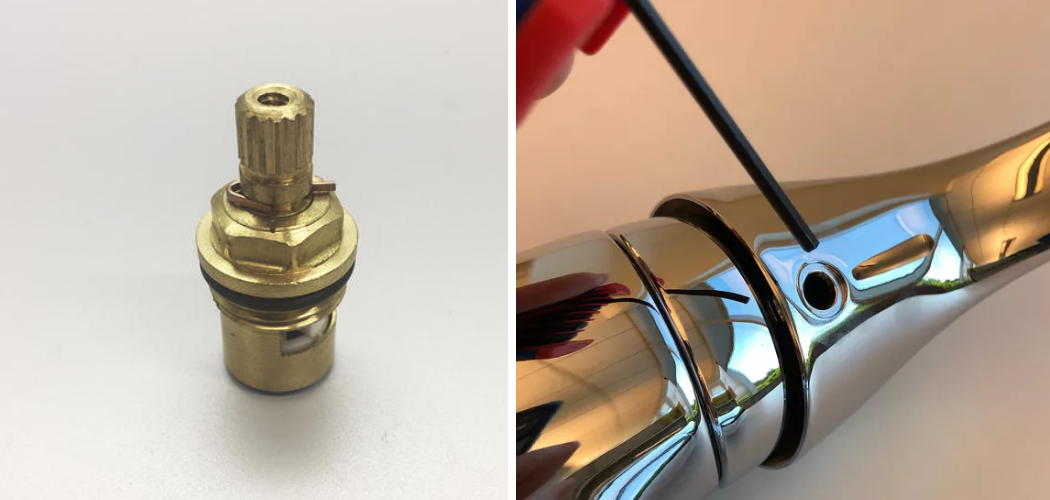If you’re like most homeowners, you probably take your kitchen faucet for granted until it starts to leak or doesn’t work right. When that happens, it’s usually time to replace the cartridge. In this blog post, we’ll show you how to replace pfister kitchen faucet cartridge.
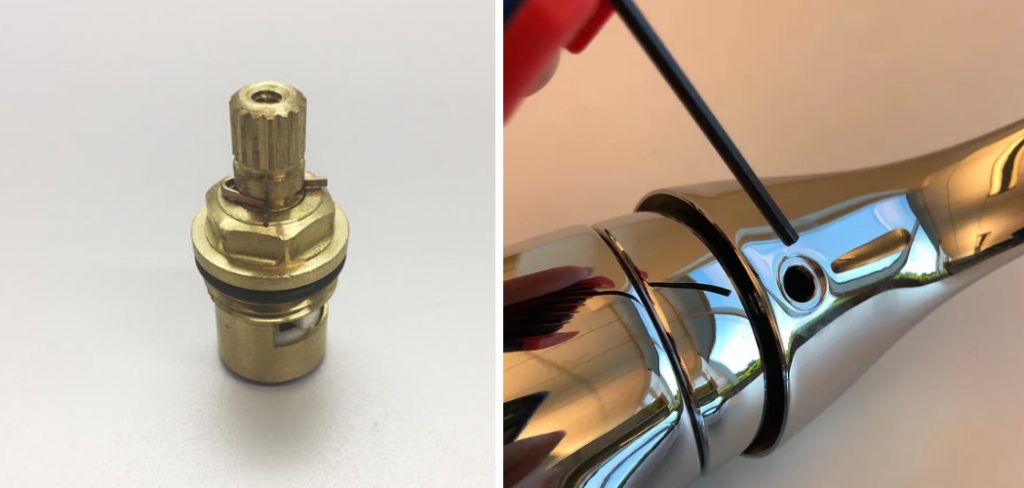
Replacing the cartridge is a relatively easy task and can be done in a matter of minutes. So if your Pfister kitchen faucet is giving you trouble, follow these steps and get it working like new again.
How Do You Fix a Dripping Pfister Faucet?
Fixing a dripping Pfister faucet is relatively simple. First, turn off the water supply to the faucet and open the faucet to drain any remaining water. Next, use a screwdriver to remove the handle from your Pfister kitchen faucet. Once you’ve done that, unscrew the bonnet nut holding the cartridge in place, then pull out the old cartridge.
Now it’s time to install your new cartridge. Make sure the new one is compatible with your Pfister kitchen faucet and replace it in position. Finally, reinstall the bonnet nut and handle, turn on the water supply, and test it out by turning on and off each handle of your Pfister kitchen faucet several times.
10 Methods How to Replace Pfister Kitchen Faucet Cartridge
1. Remove the Old Cartridge:
Use a Phillips screwdriver to remove the screws that hold the handle in place. Then, use a hex wrench to remove the retaining nut that secures the cartridge in place. Finally, pull out the old cartridge and dispose of it properly. While you are at it, inspect the other parts for any signs of damage or wear and replace them as necessary. However, if everything looks good, you can proceed to the next step.
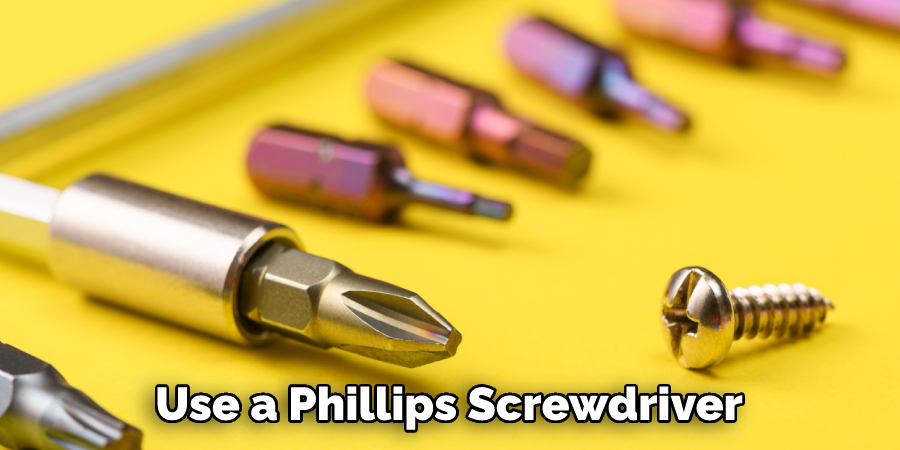
2. Clean Out the Faucet Body:
Use a rag or brush to clean out any debris or buildup that may be present in the faucet body. This will ensure that the new cartridge is able to seat properly. If a rag or brush is not sufficient, try using a toothpick to clear out any particularly stubborn debris. Try to avoid using any metal tools or abrasive cleaners, as this could damage the faucet body. Although it is important to clean out the faucet body, exercise caution as this could cause additional damage if done incorrectly.
3. Insert the New Cartridge:
Carefully insert the new cartridge into the faucet body, making sure that it is seated correctly. While you insert it, make sure that the O-rings are properly aligned with the grooves in the cartridge body. However, it is important to note that the O-rings should remain in their original positions.
4. Secure the New Cartridge:
Use the hex wrench to tighten the retaining nut until it is snug. Be careful not to over-tighten, as this could damage the new cartridge. While you may not be able to see it, you should feel the plunger of the new cartridge depress slightly when you tighten the nut. Try to keep the cartridge straight. If it is cocked at an angle, it can cause water to leak out of the faucet. Make sure the entire cartridge is submerged in the water. Once you are sure everything is secure and aligned, turn on the cold and hot water to test that there are no leaks.
5. Reattach the Handle:
Use the Phillips screwdriver to reattach the handle to the faucet body. Make sure that it is tightened securely in place. Although this task may seem straightforward, it is important to ensure that the handle is securely in place. Any loose or wobbly handles could cause water to leak and damage the faucet. Try to avoid over-tightening the screws as this could damage the faucet.
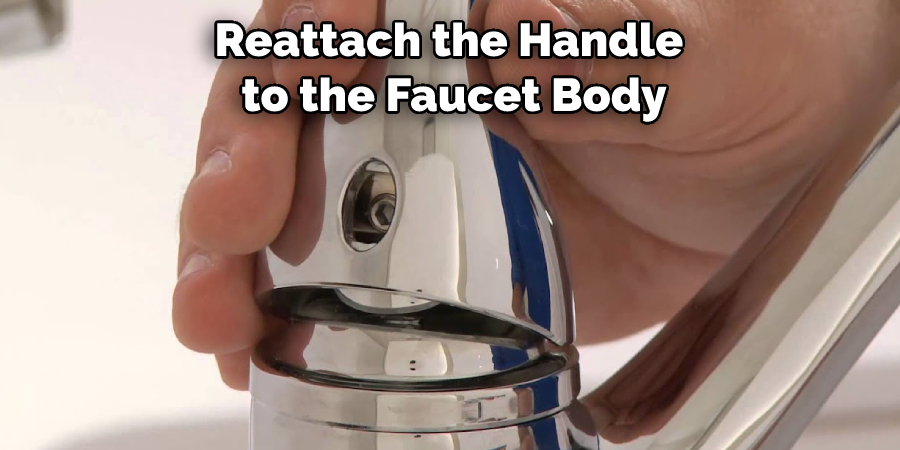
Once the handle is secure, turn on both hot and cold water to check for any leaks.
6. Test for Leaks:
Turn on the water supply and test your faucet for leaks. If there are any leaks, tighten all of the screws and nuts until they are snug. While doing this, make sure that you don’t overtighten them as this can strip the threads and create a bigger problem. If you find that the leak persists after tightening all of the connections, it is likely that one of the washers or O-rings needs to be replaced.
7. Reattach the Handles:
Once all of the water connections are secure, it’s time to reattach the handles. Line up the holes on the faucet with those on the handles, and use screws or nuts to secure them in place. If your faucet has a cover plate, make sure you install it before attaching the handle. However, some handles don’t require a cover plate. Once the handles are secure, turn on the water supply to make sure everything is working properly.
8. Test the Faucet:
Now it’s time to test the faucet and make sure it works properly. Turn on both hot and cold knobs, then check for any leaks or other problems with the operation of your faucet. Make any necessary adjustments to ensure proper functioning before you enjoy your newly installed bathroom sink faucet! Congratulations—you did it! You just installed a brand-new bathroom sink faucet. Now stand back and admire your work—you deserve it! Enjoy your pristine new fixture for years to come!
9. Clean up Area:
When you’re finished installing your new faucet, make sure you clean up the area before putting away your tools. This includes wiping down any surfaces that may have been exposed to water or other debris, as well as disposing of any packaging or extra parts. Although you may be tempted to leave the job site until later, taking the time to tidy up now will save you from having to do it later. Be sure to also turn off the water and check for any potential leaks before calling your work complete. With a little effort and care, your new faucet should stay in good working condition for years to come.
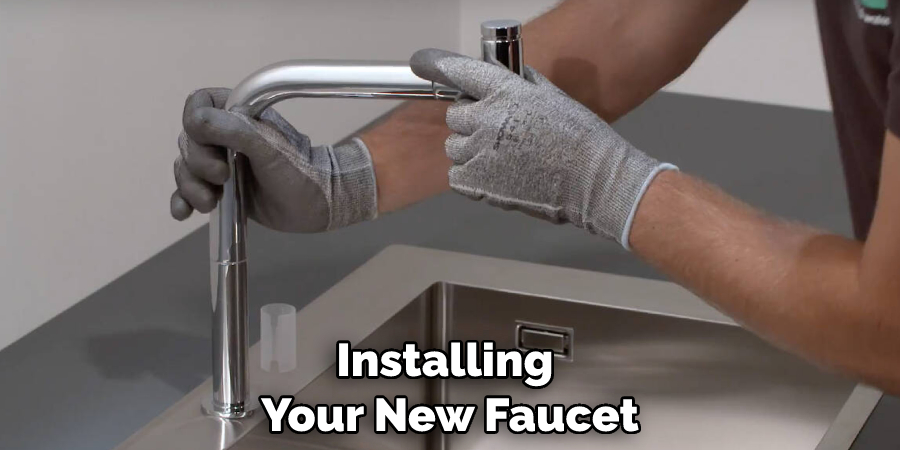
10. Enjoy Your New Faucet:
Once everything has been cleaned up, you can now enjoy your newly installed faucet and the improved look of your bathroom! With a few basic tools and a little know-how, it is easy to install most types of faucets yourself in just an hour or two. So go ahead and give it a try—you might be surprised at how satisfying it feels to complete this project on your own. You’re sure to be proud of the end result!
Bonus Tip: Be sure to check your local codes and regulations before beginning any plumbing projects. Following these guidelines will help ensure that your project is safe, up-to-code, and capable of lasting for many years to come. Good luck!
Things to Consider When Replacing Pfister Kitchen Faucet Cartridge
1. Know the Type of Cartridge:
Pfister kitchen faucets come with either a single handle or two handles and each type of faucet requires its own specific cartridge. It is important to know which type you have before replacing the cartridge.
2. Check for Compatibility:
Before purchasing a new cartridge, make sure it is compatible with your Pfister Kitchen Faucet model number. You can usually find this information on the manufacturer’s website or in the product manual that came with your faucet when purchased.
3. Make Sure All Tools Are Ready:
To replace the cartridge, you will need several tools, including wrenches, pliers, and screwdrivers, so be sure to gather all the necessary tools before you start.
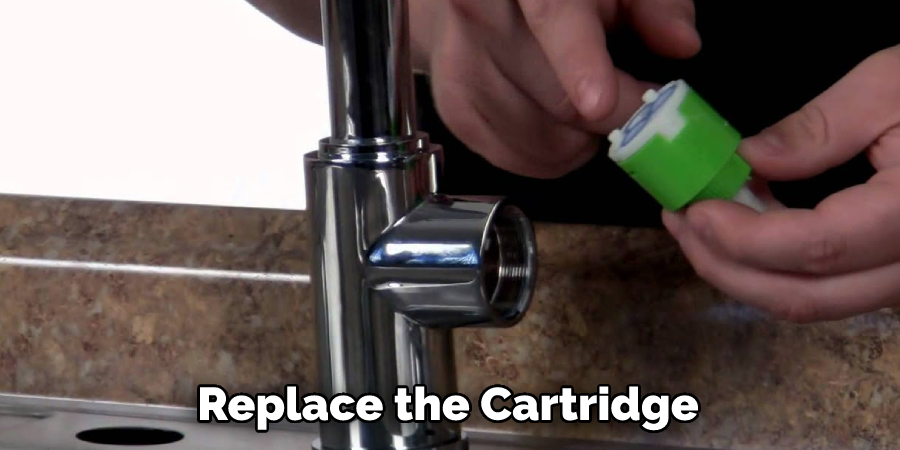
4. Turn off the Water:
Before beginning, make sure to turn off the main water supply so it does not spray out when removing the faucet cartridge.
5. Remove the Handle:
To access and replace the cartridge, first, you must remove the handle by unscrewing any screws that are holding it in place. After removing all screws, pull up the handle to reveal the cartridge underneath.
6. Loosen and Remove the Cartridge:
Unscrew any nuts or bolts, securing the cartridge before carefully lifting it out of its housing and setting it aside for disposal or reuse, depending on its condition.
7. Insert New Cartridge:
Carefully insert your new cartridge and secure it in place with the same nuts and bolts that you took off to remove the old cartridge.
8. Reattach handle:
After the new cartridge is secured, reattach the handle and any screws that were removed during this process.
9. Turn on the Water Supply:
Finally, after all the steps are completed, turn the main water supply back on to check for leaks or other issues before you use your faucet.
Conclusion
Knowing how to replace your Pfister kitchen faucet cartridge is a great way to keep your faucet in top working condition. By following the simple steps on how to replace pfister kitchen faucet cartridge outlined in this blog post, you can easily and effectively replace your cartridge yourself without having to call a plumber.
Plus, replacing your own cartridges can save you money on expensive service calls. So next time your Pfister kitchen faucet starts acting up, don’t hesitate to give replacement a try – it’s easy, and it might just save you some money in the long run!

